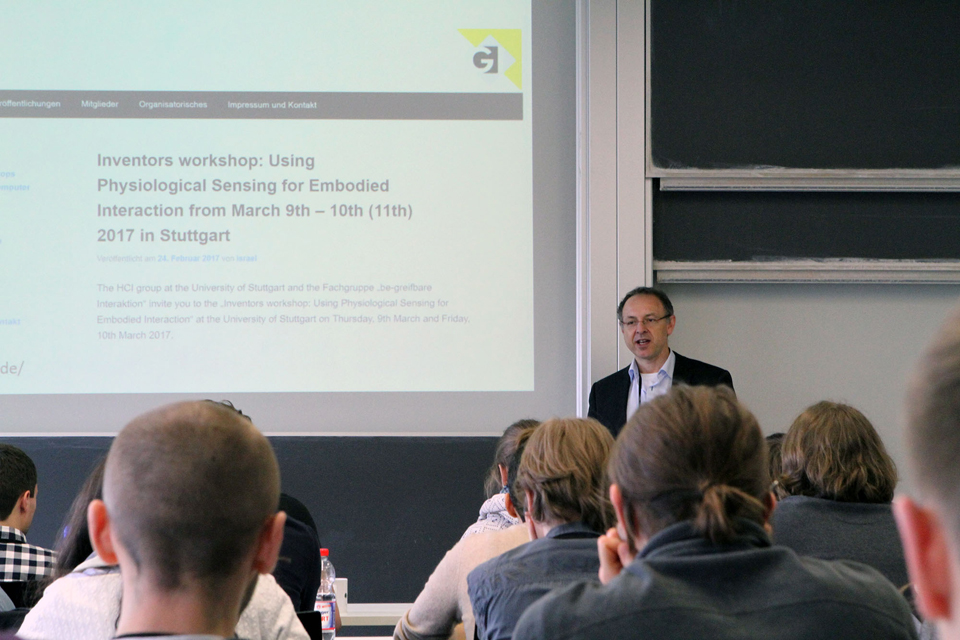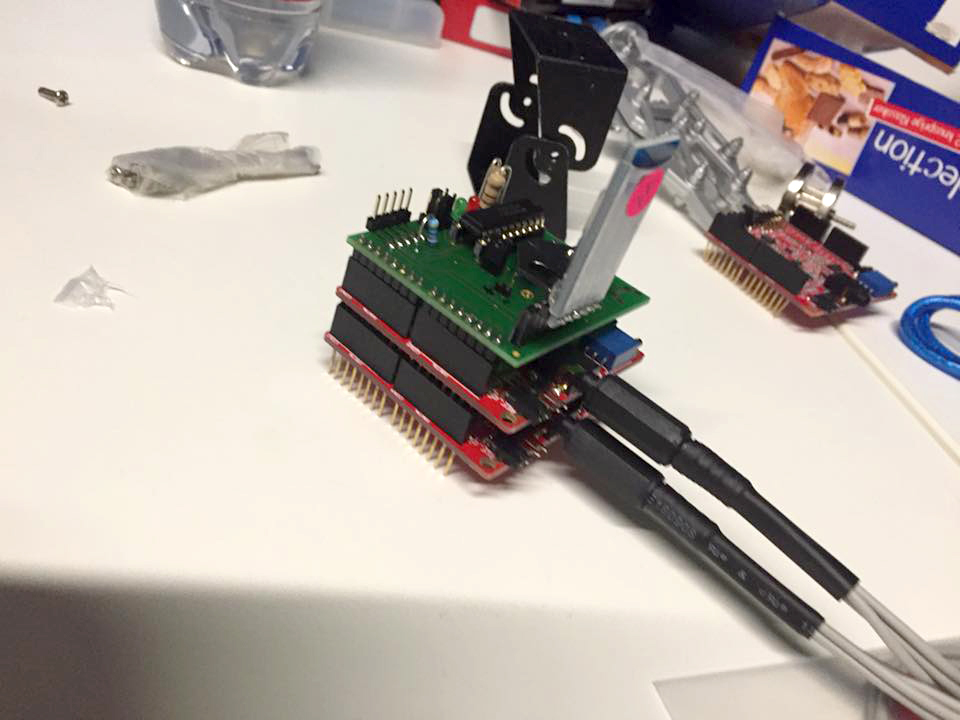In cooperation with the GI-Fachgruppe Be-Greifbare Interaktion, the HCI group at the University of Stuttgart organized the annual Inventors-workshop with the topic: Using Physiological Sensing for Embodied Interaction. In the workshop, we introduced the basic concepts for sensing of human muscle activity accompanied by a refreshing Keynote from Leonardo Gizzi. We provided a basic explanation of how physiological sensing works, introduced how it can be technically realized, and showed different applications and usage scenarios.

Using Arduino-boards with EMG shields all participants acquired hands-on experience in creating their own EMG controlled device. Additionally, we provided a processing module with Bluetooth that allowed building a wireless EMG-Prototype. During the workshop, we first used a pre-programmed setup to demonstrate working principle and the signal output that can be expected. Then teams defined their own ideas and worked towards a fully functional prototype. At the end of the workshop, each team presented what they have created.

You can find the results of the workshop, including video presentations of each project, on https://www.hcilab.org/erfinderworkshop2017. Additionally, you can find software and hardware resources on https://www.hcilab.org/erfinderworkshop2017/hardware-and-software-for-emg.

Great work!!! It is so refreshing to see students craft something and to understand the conditions that influence the quality of data collection. I look forward to the day when I can play air guitar for real.